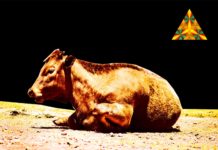One of the most exciting sights in the animal world is the annual migration of the Tanzania wildebeest, which normally happens in the summertime. However, this year witnesses were shocked to see that the tens of thousands of creatures had already begun their journey even though summer is about three months away. The thought is that especially dry weather conditions in the area of the southern part of the Serengeti are causing the wildebeest to start their northern journey much earlier than ever before.
The wildebeest migrated in 2014 in May, but this time the March appearance of the beasts was an even more amazing sight, according to Bradley Murray, who is the general manager of Singita Faru Faru Lodge in the Serengeti National Park. He said that the animals’ early showing means that tourists in the area can witness the great spectacle of the thundering herds of wildebeest and get by with paying nonpeak prices for their vacations.
For instance, normally the wildebeest travel their migration route in July and during that timeframe places like Kenya’s Mara Serena Safari Lodge charge about $638 a day for a room for two people, while during the non-peak season it is about half that price or even lower, as in April they charge about $258 a night.
This means that anyone coming to the area to see the migration of the wildebeest or do anything else in the country can potentially save thousands of dollars on an average five day vacation with a visit between now and May instead of coming in the summer.
The great migration includes more than a million and a half wildebeest, along with about 200,000 zebras, who make their journey of about 1,200 miles every year. The animals do this because they are looking for a better water supply. The herd of wildebeest and the herds of zebras usually trek to the north via the Serengeti area, and then they all head off to the Maasai Mara Game Reserve in Kenya. In the fall, the animals once again head south and trek the same route in reverse.
According to Brian Jackson, one of the safari professionals in the area, some of the wildebeest and zebra take the above route, while others head in a more westerly route via the Western Corridor. Along the way, the animals face many dangers and treacherous areas as they are also hunted by carnivores like lions, leopards, cheetahs, hyena packs, and crocodiles.
Tourists head to this area every year to watch the mighty beasts gallop along the migration routes, thrilling to every thundering hoof beat and hoping for something exciting like a lion attack, says Jackson. He added that the zebras often beat the wildebeest to the final destination in their venture to get to the grasses and water sources. Then, the animals all stay in the area usually until about October, which is also when the tourist season normally peaks.

















